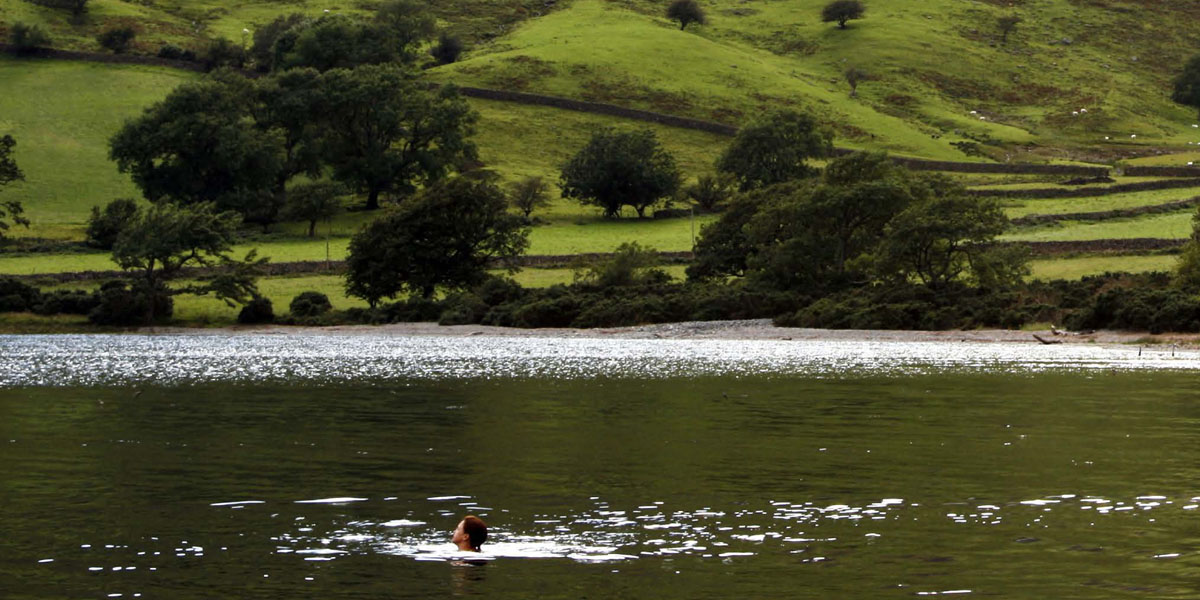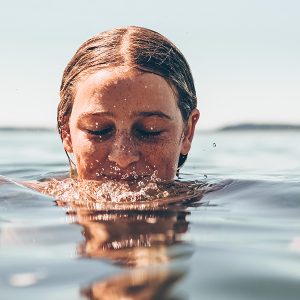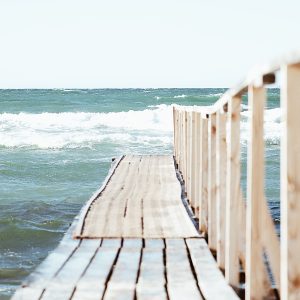Now that rivers and lakes are getting cleaner and clearer, more people in the UK have been bitten by the wild swimming-bug – and not only during the summer.
Picture a winter vacation in Buckinghamshire, UK, and imagine you’re taking a morning walk near the quiet Black Park Lake. When you exhale, tiny clouds form in the freezing air. You start craving a steaming mug of hot chocolate, to be enjoyed later in front of the fireplace at an inn. Suddenly you see splashing in the almost-frozen lake. Wow, you think. People are actually swimming, in the dead of winter!
You have to wonder why, and at the same time ask yourself whether you would have the nerve or ability to do that, and whether it would give you a huge buzz, considering other people are crazy enough to do it. ‘You better believe it’ is the answer to that question, according to the people who have been bitten by the wild-swimming bug. Their numbers are growing, and the participants range from young to old. Year-round, open-water swimming in the UK is very popular these days.
Emma J. Hardy of the London Swimming Club (LSC) has a more nuanced take on the subject. “It’s true that the number of open-water swimmers in the UK has exploded over the past few years,” she says, “but I think that the enthusiasm is lasting, and not just some hype that will fade again. Actually, it’s not a new phenomenon. Swimming in the ocean and in lidos, man-made outdoor swimming pools or ponds, has always been an important part of British life.
After the Victorian era however, many of these lidos and seaside resorts fell into disrepair. These locations are slowly being restored to their former glory. I am convinced that it’s more a comeback than a hype.” Following the example set by this revival, Hardy has breathed new life into the LSC. “Founded in 1859, it’s one of the oldest registered swimming clubs in London,” she says.
“Like so many Victorian swimming clubs though, the once-so-active LSC ultimately folded and disappeared from the collective memory. By coincidence, one day my friend Alice Tomlinson and I saw an old advertising poster for the club at the Museum of London Docklands. After some investigation, we discovered that the LSC was no longer active. That was when we decided to start the club back up again. It is now an informal group whose most important goal is for us to be able to send each other messages and see who’s up for taking a dip in open water.”
“We mostly swim at the Royal Docks of London, but also a variety of other spots in the city. Swimming in the city is very different from swimming in nature, but then again, it’s also similar in certain ways. Recently, when I was swimming with some friends in the sea near Dunwich in Suffolk, a sea lion swam up to keep us company. I can’t picture that happening in London. On the other hand, outdoor swimming in the city can give you a surprising sensation of calm and space in an environment that is otherwise super busy and overcrowded.”
- The full story ‘Wild swimming in the UK’ can be found in Issue 25.
Text Chris Muyres Photography Daniel Start














